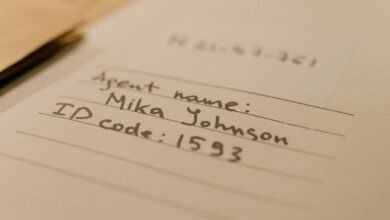Techniques for Success in Bookkeeping 8602400347

Successful bookkeeping requires a strategic approach to incorporate various techniques. Embracing technology streamlines processes and reduces errors, while a consistent workflow enhances productivity. Regular reconciliation of financial records is crucial for accuracy and trustworthiness. Additionally, ongoing professional development ensures bookkeepers remain adaptable in a changing landscape. These elements collectively create a robust framework for effective bookkeeping, prompting a closer examination of how each contributes to overall success.
Embracing Technology for Enhanced Efficiency
As businesses increasingly recognize the importance of efficient financial management, embracing technology has become essential for enhancing bookkeeping processes.
Cloud accounting platforms streamline financial data management, enabling real-time access and collaboration.
Additionally, automation tools reduce manual entry, minimizing errors and saving time.
Establishing a Consistent Workflow
Establishing a consistent workflow in bookkeeping is crucial for maintaining accuracy and efficiency within financial processes.
Effective workflow optimization enhances time management, allowing professionals to allocate resources judiciously. By implementing standardized procedures, individuals can streamline tasks, reduce errors, and improve overall productivity.
This structured approach not only fosters a reliable accounting environment but also empowers practitioners to focus on strategic decision-making and financial growth.
Ensuring Accuracy Through Regular Reconciliation
Regular reconciliation is a fundamental practice in bookkeeping that significantly enhances financial accuracy and integrity.
This process facilitates data validation, ensuring that financial records align with bank statements and other documents.
By identifying discrepancies promptly, businesses can achieve effective error detection.
Ultimately, regular reconciliation empowers organizations to maintain precise financial information, fostering trust and enabling informed decision-making while ensuring operational freedom.
Continuous Learning and Professional Development
Accurate financial records are only as reliable as the knowledge and skills of the individuals managing them.
Continuous learning through online courses enhances technical proficiency, while networking opportunities foster valuable connections within the industry.
This dual approach not only updates essential skills but also encourages the exchange of innovative practices, empowering professionals to adapt and thrive in a dynamic bookkeeping landscape.
Conclusion
In conclusion, the integration of technology in bookkeeping not only streamlines processes but also significantly reduces errors, with studies indicating that automation can decrease human error rates by up to 90%. Establishing consistent workflows and regular reconciliation further enhances accuracy and trust in financial records. Coupled with ongoing professional development, these techniques equip bookkeepers to navigate the complexities of the financial landscape effectively, ultimately leading to improved productivity and informed decision-making for businesses.





